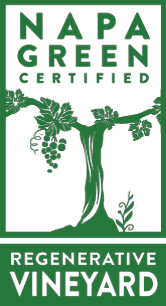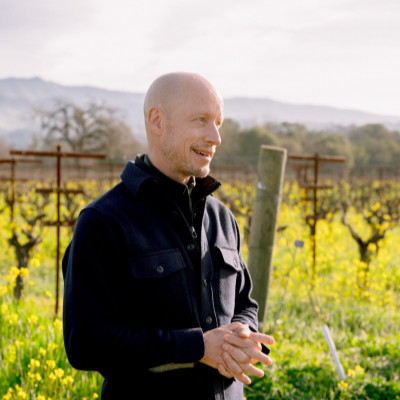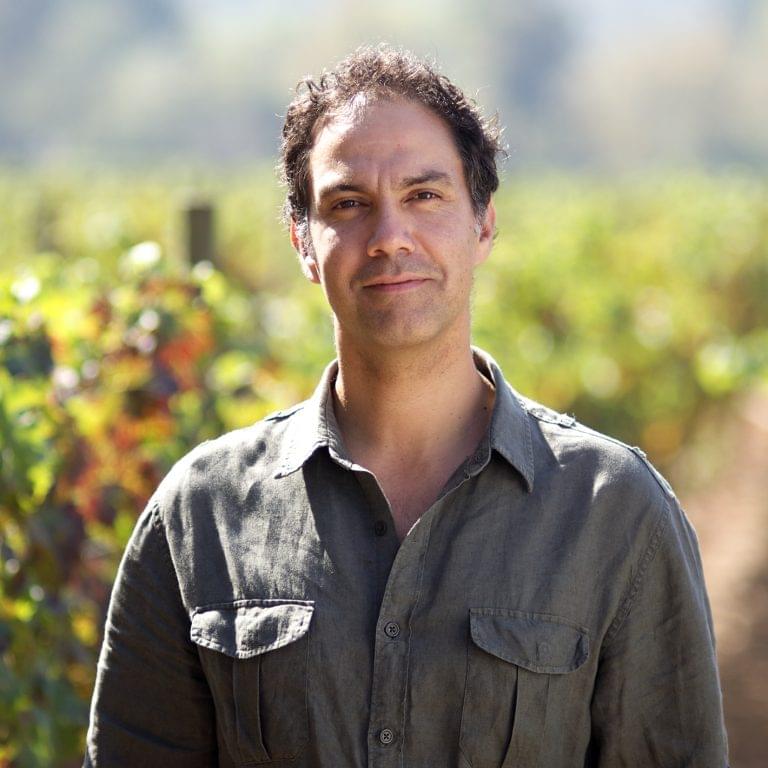
Napa GREEN VINEYARD CERTIFICATION
REGENERATING CARBON, CLIMATE, AND COMMUNITY
The Napa Green Vineyard certification standards were designed by experts to provide a science-based regenerative roadmap and climate action framework custom-designed for viticulture, taking a whole system approach. The standards include regenerative social practices that engage and retain dedicated teams, critical for the transition to and stewardship of regenerative agricultural and business systems. Our vineyard certification is the first sustainable winegrowing certification to focus specifically on regenerative farming, climate action, and social stewardship.
The standards are composed of six elements and are both practice and performance-based, baselining and tracking Soil Organic Matter (SOM), water, energy, fertilizer, Scope 1 & 2 emissions, and scientifically rigorous quantification of carbon sequestration, to ensure these practices are achieving real results, and continuing improvement over time.
This is a whole property certification, encompassing the full agroecosystem – from what is happening underground in the soil, to what is happening in the atmosphere, to how this impacts the broader community.
Roundup & Glyphosate
In fall 2023, Napa Green announced that all members will have to phase out the use of Roundup and other glyphosate-based products by the end of 2025. As of July 2025, over 90% of Napa Green members are Roundup/glyphosate-free. The next target is the elimination of all synthetic herbicides by the end of 2027. We also have a Gold Level that gives added recognition to Organic certified members.
Learn more about the certification process through our Certification Roadmap


What is the Difference Between Napa Green and Beyond Green?
Our roots are in Napa. Over the past 21 years, beginning with the stewardship of the Napa Valley Vintners, and now as an independent nonprofit, we have established one of the most rigorous, whole system sustainable winegrowing programs in the world.
Over the years growers and vintners from other wine regions have asked about the opportunity to work with Napa Green’s expert team. In 2025, Napa Green is expanding its reach under the region-agnostic brand “Beyond Green,” which offers the same leading services and certification. Napa Green remains the nonprofit and the Napa Valley brand.
As Beyond Green rolls out there are limited spaces available to join the expanded program. Napa Green will prioritize beyond-Napa properties owned or in the same portfolio as current Napa Green members.

Elements of Regenerative Vineyard Certification
We cannot have environmental or economic sustainability without social sustainability. True sustainability requires caring for the health and resilience of our environment, and the health and resilience of our employees and community, all of which contributes to the success and longevity of our businesses.
At its core regenerative agriculture is about farming for soil health and diversity below- and above-ground, building resilience. As growers build the underground “brain” of microbial and fungal networks, improve water infiltration and retention, use cover crops to add nutrients and attract beneficial insects and birds that control unwanted pests, bring animals into the vineyard to serve as natural tillers and fertilizers, plant hedgerows and trees that can further enhance diversity, water, and carbon storage, they create farms that are more and more self-regulating, needing less and less human intervention and inputs.
Premium wine grape growers already practice regulated deficit irrigation, allowing for a strategic level of vine water stress that is tied to increased fruit quality. Along with this best practice, there are expanding opportunities and technologies to maximize the performance of irrigation systems, track water use, and fine tune irrigation timing and amount. As vineyards are replanted there is also the opportunity to strategically plan and design for dry farming. Water is arguably the resource most impacted by climate change.
Forest Management
Forests are not only our largest terrestrial carbon sink – they are also home to 80% of the world’s on-land diversity, and they are critical to water capture and groundwater recharge. Because forests store so much carbon there can be a misperception that more trees always equal better. In fact, what we need are healthy forests, which means a balanced density of native trees and plants. Healthy forests experience lower intensity fires with less tree mortality, meaning higher carbon retention and ecosystem function.
The Napa Green Vineyard certification was developed as a regenerative, whole systems roadmap specifically for viticulture. Limiting soil disturbance, including the phase out of chemical inputs, is core to regenerative agriculture. Roundup and many other synthetic chemical applications undermine and damage microbial and fungal networks, the underground “brain” that services the vines. Moving away from pesticides and cultivating diversity builds stability and resilience.
Climate-Smart Burning
Open burning of spent vines and other wood waste creates black carbon, a powerful greenhouse gas, and generates community pushback. Napa Green has developed resources to implement conservation burning, and formed relationships with contractors available to provide flame-cap kilns and air curtain burners (competitive in price with chipping). These alternatives dramatically reduce smoke and emissions, can generate biochar, and reduce soil damage from burns. Pursue burn methods that burn faster, make neighbors and the Air District happy, and in the end, generate a product that you can use with compost to increase nutrient & water retention and plant availability.
If you would like to dig deeper and explore the certification standards please Enroll Now or Download the standards. There is no obligation if you enroll.
Napa Green is the first sustainable winegrowing certification globally to require the phaseout of Roundup, and ultimately synthetic herbicides. When we looked for a roadmap and resources for going herbicide-free we didn’t find it all in one place, so we created this Weed Management Toolkit to support our Napa Green community and other perennial growers looking to cultivate healthier soils and regenerative farm systems.
Why work with us?
Regenerative Carbon Farm Plans
Napa Green’s vineyard team has been trained in the Carbon Cycle Institute’s protocol to develop regenerative, whole-farm Carbon Farm Plans (CFPs). These plans review all of your current beneficial practices that are increasing soil and ecosystem health and storing carbon, and identify additional opportunities to regenerate the soil and vineyard ecosystem and simultaneously maximize carbon capture in a given property.
Irrigation Assessments
Irrigation Distribution Uniformity assessments are customized for each grower and provide rapid evaluation of irrigation efficiency and uniformity throughout the vineyard. Growers receive a report with recommendations to maximize efficiency and irrigation system performance, linked to vine health and fruit quality.
expert consulting team
Uniquely, our Vineyard Certification doesn’t just provide a roadmap for leading practices. We provide expert, boots on the ground support. The vineyard team are Technical Assistance Providers that can provide valuable, hands-on guidance in the transition to regenerative, climate-smart viticulture. The team supports soil sampling and analysis, and organizes practical training and education workshops throughout the year.


GREEN vineyard CERTIFICATION costs
Annual Licensing Fees
Billed annually, these fees cover a fraction of our expert staff time to facilitate certification and annual desk audits, develop resources, training and education workshops & events, and communicate the climate action leadership of our members.
Regenerative Carbon Farm Plan
Onsite Assessment & Report
+Review with Team (every 3 years)
Napa Green’s vineyard team has been trained in the Carbon Cycle Institute’s protocol to develop regenerative, whole-farm Carbon Farm Plans (CFPs). These plans review your current beneficial practices that are increasing soil and ecosystem health and storing carbon, and identify additional opportunities to regenerate the soil and vineyard ecosystem and simultaneously maximize carbon capture.
Member Cost Estimates
Irrigation ONSITE Assessment
Irrigation Distribution Uniformity Onsite Assessment & Report
+Review with Team (every 3-4 years)
Our expert vineyard team is trained in the CalPoly protocol to rapidly evaluate the distribution uniformity (DU) of your drip irrigation systems. Delivering the right amount of water, evenly, at the right time is critical to vine growth and grape quality.
Member Cost Estimates
Third-Party Auditor Independent Validation of Practices (every 3 years)
Independent validation that you are meeting Napa Green Vineyard practice and performance-based standards, walking the talk, is critical to marketplace assurance. Our network of third-party auditors have gone through training in the Napa Green programming, and will validate implementation of practices that our team has not been able to review.



